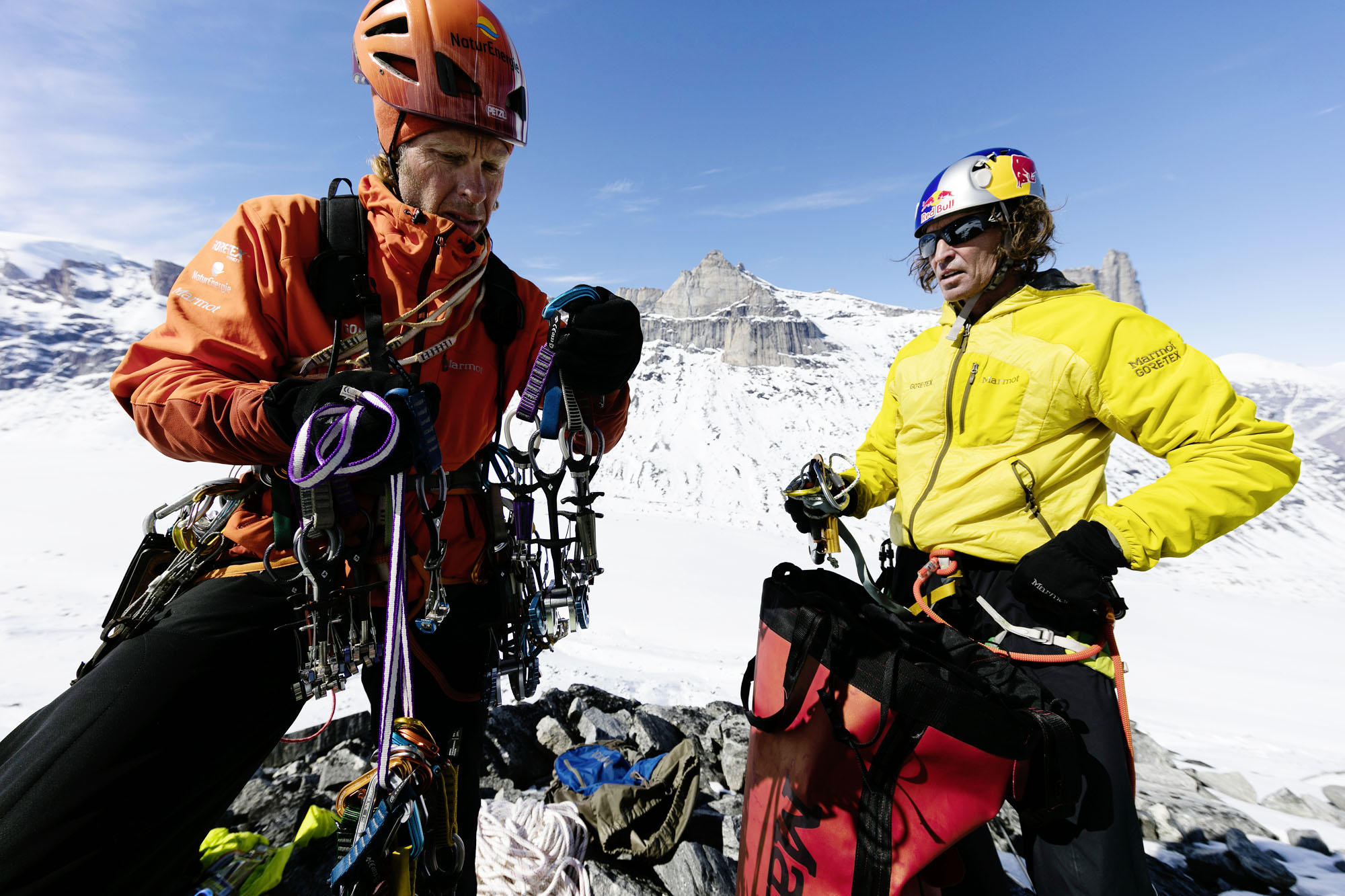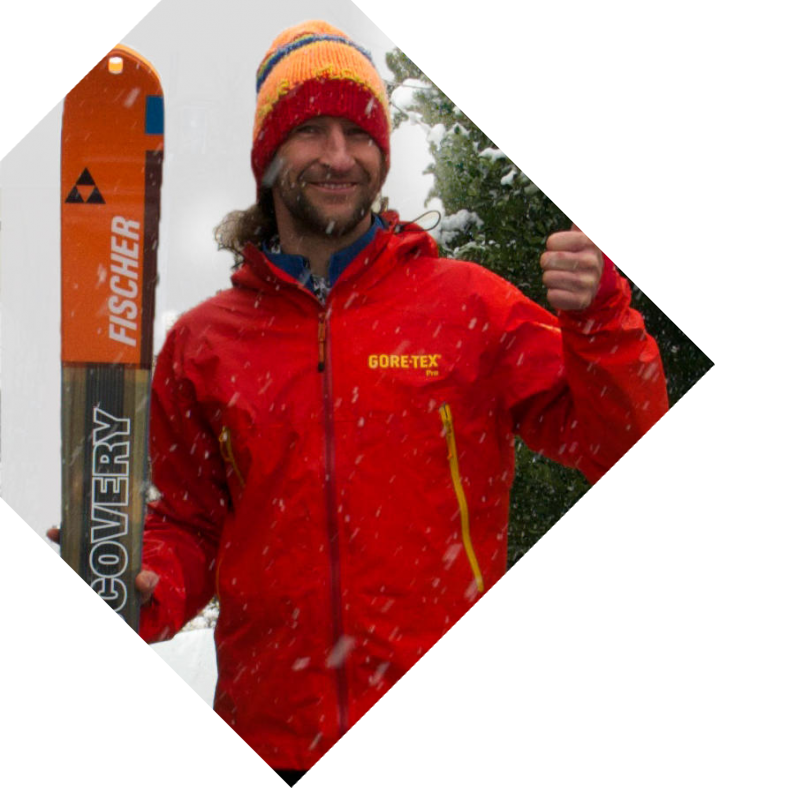As a sport, climbing offers the great opportunity […] to experience fantastic nature and to travel to some interesting countries. (W. Güllich)
When I started climbing Wolfgang Güllich was unfortunately already dead. But in the climbing scene he was everywhere – he was one of the best sport climbers around in the 80s. He was regularly quoted and drinking coffee became a new discipline within climbing. Over a cup of coffee, you can discuss the difficulty of the climbs and rack your brains on the ethics of artificial holds, bolts and the distance between the rings. Or you can sit down in a café, order a macchiato, leaf through the appropriate climbing literature and inspire yourself. Photos, routes, and journeys: where are you headed to next? No other climber puts travelling at the core of his ideas as firmly as Stefan Glowacz. Glowacz is someone who knows Güllich's attitude well. As a young man from Garmisch, he emulated climbers like Albert and Güllich, followed in their footsteps, was their companion and raised the bar in the world of climbing. No one uses the magnificent opportunity that climbing offers a fantasy-filled adventurer as consistently as Stefan Glowacz. Integrating climbing into the whole idea, that’s the exciting thing. He often visits remote regions to discover new territory. It doesn’t necessarily need to be an extremely difficult climb or a first ascent. New ground can also be shown in the way the ambitious goal is reached. “Integrating climbing into the whole idea, that’s the exciting part,” says Stefan. Stefan Glowacz, Robert Jasper – another GORE-TEX athlete – and the photographer Klaus Fengler have just come back from their expedition to Baffin Island. “That was a great success,” said Stefan who was excited but a little bit tired after he arrived back in Bavaria. For one month they fought their way through the Canadian wilderness, climbed the 500m-high Turret West Face and then returned to the starting point via another route.
One month for one day
Travelling independently for one month, they dragged all their equipment and provisions behind them for 9 days over 170 kilometres on newly-developed high-tech carbon sleds, they flayed themselves over glaciers and mountain passes, through river beds and tundra to discover at the rock face that their climbing route had already been tackled. They couldn’t claim the first ascent! In one go they climbed for more than 27 hours and found an unclimbed variant. Stefan got caught in a rock fall and his wrist was bruised. Robert climbed the exit routes in partially icy crevices and thick driving snow. After 14 rope lengths of 9-/A1 difficulty they reached the summit. They abseiled down and started the return journey which proved more challenging than they thought. The team was on the road for another 13 days and had to improvise several times. One month for one day of climbing: isn’t that ratio a little bit unsatisfying? “Not at all,” says Stefan. “If we had just wanted to climb and crack the first few ascents, then we would have done it differently. Generally, climbers get transported there by boat or skidoo, set up base camp and still have all the time in the world. After that, they get picked up again or ride back themselves on a snowmobile.” Stefan and his partner had a different focus: “we wanted to start from Clyde River, the last outpost of civilisation, to the face on our own. The exciting thing for us was to plan it so that we could free climb in a season where it’s possible and get there and back on our own. That only gives you a narrow timeframe, so you have to plan very carefully with little leeway. No one had ever done that before. We wanted to do it exactly that way. And that’s exactly how it worked.”

Climbing can be more than climbing, if you make the most of it
Just as Güllich expanded the horizons of several climbing generations with his theses on coffee and travelling, Stefan and Robert enrich the scene with their ideas: the “how” of climbing and the climbing style of the route had been the focal point for many decades. The “how” of getting to the route wasn’t as important. But on this trip to Baffin Island that was exactly what they focused on. “As for the climbing itself, navigating the rock, that is part of our routine. We can calculate that, we know what we’re doing. But with fences to fend off polar bears, arctic snow melting, frozen (or not frozen!) fjords – that’s an adventure.” They say an adventure is the result of bad planning. But even planning has its limits. Before their trip, Robert and Stefan consulted the climate researcher Prof. Mulch from the Senckenberg Stiftung to help them better assess the climate conditions and for instance, the real danger of polar bears, but even he couldn’t say much. It has become more difficult to assess such things. His advice to the climbers: “Just make decisions day by day.” Exactly what the three adventurers wanted to hear.





